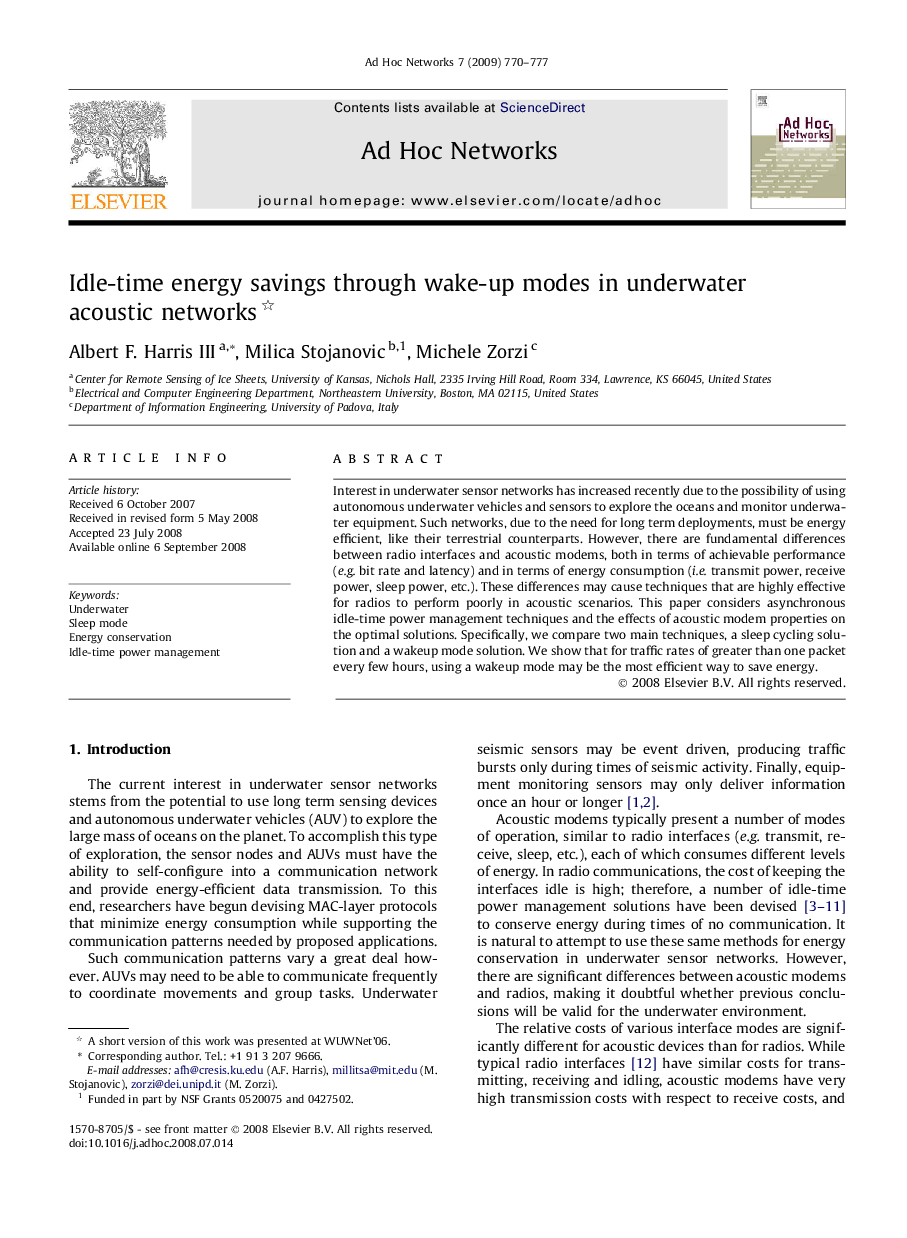| Article ID | Journal | Published Year | Pages | File Type |
|---|---|---|---|---|
| 444850 | Ad Hoc Networks | 2009 | 8 Pages |
Interest in underwater sensor networks has increased recently due to the possibility of using autonomous underwater vehicles and sensors to explore the oceans and monitor underwater equipment. Such networks, due to the need for long term deployments, must be energy efficient, like their terrestrial counterparts. However, there are fundamental differences between radio interfaces and acoustic modems, both in terms of achievable performance (e.g. bit rate and latency) and in terms of energy consumption (i.e. transmit power, receive power, sleep power, etc.). These differences may cause techniques that are highly effective for radios to perform poorly in acoustic scenarios. This paper considers asynchronous idle-time power management techniques and the effects of acoustic modem properties on the optimal solutions. Specifically, we compare two main techniques, a sleep cycling solution and a wakeup mode solution. We show that for traffic rates of greater than one packet every few hours, using a wakeup mode may be the most efficient way to save energy.
